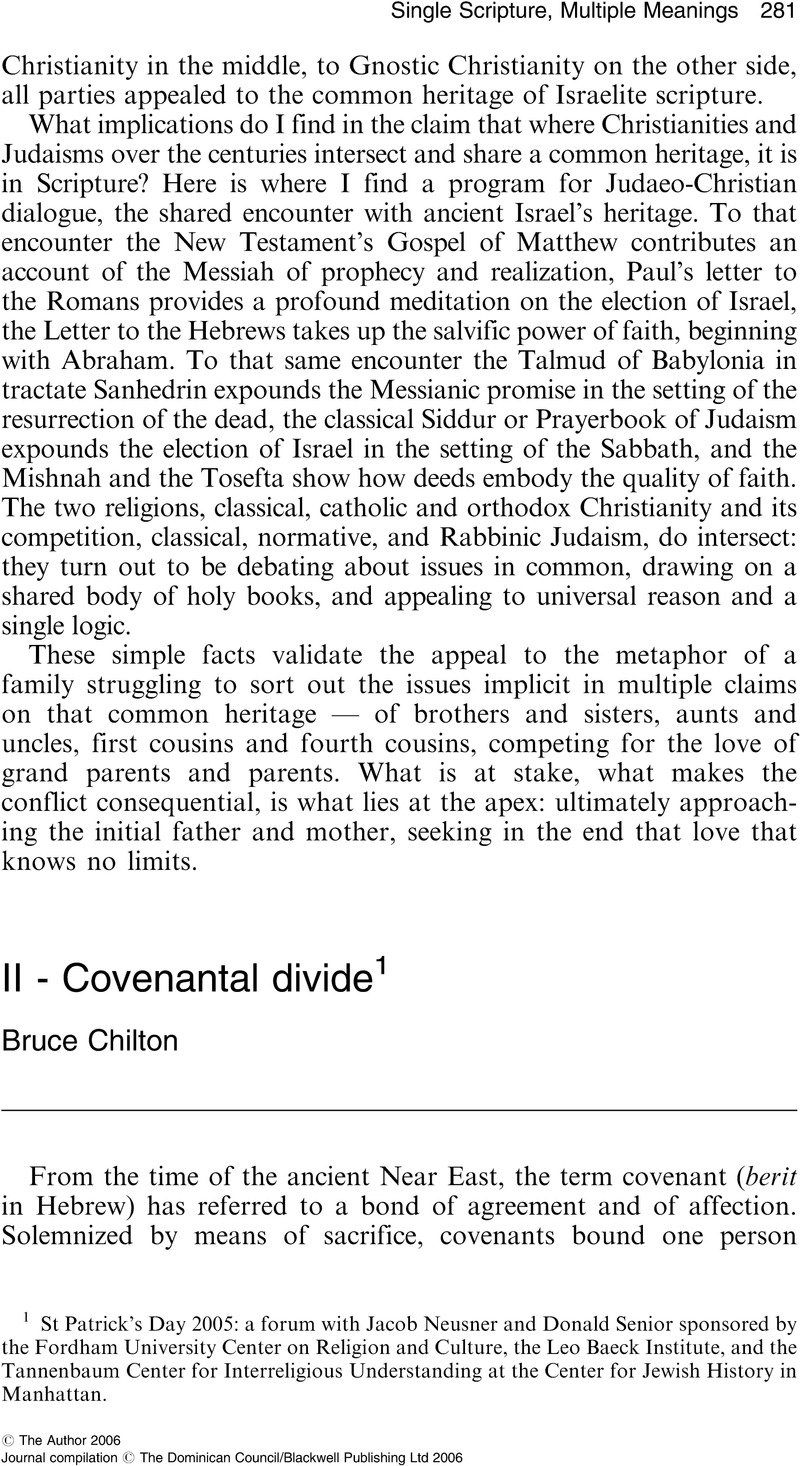No CrossRef data available.
Published online by Cambridge University Press: 01 January 2024

St Patrick's Day 2005: a forum with Jacob Neusner and Donald Senior sponsored by the Fordham University Center on Religion and Culture, the Leo Baeck Institute, and the Tannenbaum Center for Interreligious Understanding at the Center for Jewish History in Manhattan.